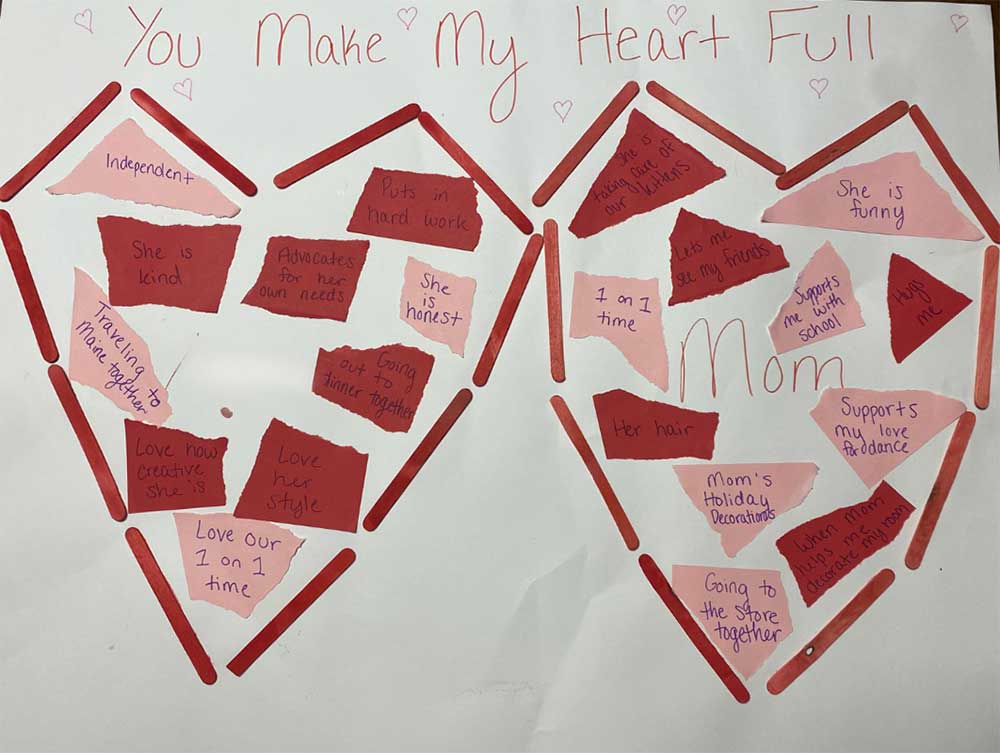Getting creative with therapeutic interventions
Creativity is important. Simply engaging in creative activities can boost your mental health and a new survey from APA finds about 46% of Americans use creative activities to relieve stress or anxiety, such as playing the piano, crocheting a blanket, dancing with friends or solving crossword puzzles.
It is important to ensure that mental health treatment feels personal and tailored to an individual’s specific needs, especially when it comes to treating children.
Caroline Smith, a Youth Villages family intervention specialist, has spent the last eight years working with children and treating their mental and behavioral health. Over the years, Caroline has found the best success with children and families comes when she can find ways to bring creativity into her treatment planning.
Caroline worked with Sydney, a 10-year-old who struggled with trauma, toxic stress, and physical and verbal aggression. She and her mother, Andrea, struggled to communicate effectively and had difficulty identifying any positive aspects of their relationship. Sydney would become physically aggressive toward Andrea and struggled to use effective coping skills to regulate emotions. This led to frequent hospitalizations for Sydney.
Sydney was placed in a short-term stabilization clinic and while she was there, one of her favorite coping techniques became collaging. Caroline knew if she could work this new hobby into Sydney’s treatment plan, it had a higher chance of being successful. Wanting to focus on Andrea and Syndey’s perception of their relationship, Caroline had them each write down some of their favorite memories together. She then created a poster board with two empty hearts, one heart was Andrea’s, and one was Sydney’s. The mother and daughter took turns placing their memories inside each other’s hearts. Once they saw the many good aspects of their relationship represented visually, they put their negative feelings about their relationship to the side and began focusing on the positives.
Caroline also worked with 8-year-old Chris and his mother, Pam. Chris had a complicated relationship with his dad and struggled to communicate his feelings about his father. Although he would only see his father once in a while, every visit ended with Chris frustrated and in tears. Caroline knew that the best way to help Chris process his feelings toward his father was to implement an intervention that involved physical activity and movement.
Using what is known as the Backpack of Grief, Caroline got to work. She got a backpack, some sticky notes and some small rocks. When she met with Chris, he was immediately interested in what she had brought along. Caroline asked Chris to write down the feelings he had towards his dad on the sticky notes. She then had him place one sticky note on each of the rocks and place them into the backpack. Caroline asked Chris to put the backpack on and carry it throughout his home. At first, Chris said the backpack wasn’t heavy but after a while, all he wanted to do was take it off.

The rocks gave Chris a visual comparison to the thoughts he carried with him all the time. Caroline explained how giving some of the rocks to others could take the emotional weight off of him. He loved the activity, and his mother said he talked about it the entire day.
While family intervention specialists follow a proven clinical model, they are encouraged to think outside the box and get creative with interventions. Taking the time to learn what motivates them can help build rapport with families and make treatment feel engaging and fun.
______
Support our intensive in-home services services that help children like Sydney and Chris by providing systemic family therapy to prevent out-of-home placements (e.g., foster care, residential treatment, detention centers, hospitals or other juvenile facilities).

